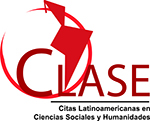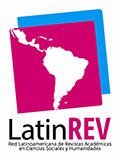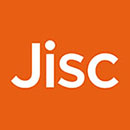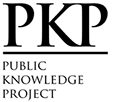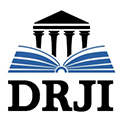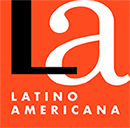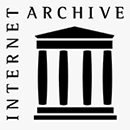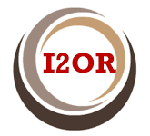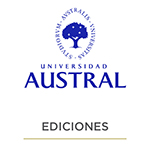Expert witness report and substantial similarity in plagiarism cases
Abstract
The article analyzes the role of experts in plagiarism cases. Technical experts, summoned by the judge or the parties, must evaluate the similarities between the works in conflict, whatever the genre involved. The expert requires technical skills to support a reasoned opinion that applies the technical and scientific rules of the corresponding discipline. He analyzes the creative process, distinguishing the common elements that cannot be appropriated from those creative expressions of a work that are copied in another. It must establish whether these similarities are due to independent creations or whether it is a matter of appropriation of another’s work, which cannot be justified by chance or accident.
Guidelines are proposed for applying the substantial similarity test, so that the judge can have sufficient information to convict or acquit. The use of specific technical resources is suggested, considering each category of works. At the same time, it is indicated which elements will be relevant to be able to challenge an expert opinion or to establish its validity, considering that the judge cannot arbitrarily deviate from a well-founded opinion that adequately uses the rules of the art.
Downloads
References
Aistars, S. (2023). Copyright’s Lost Art of Substantial Similarity. Vanderbilt Journal of Entertainment & Technology Law, 26, 101-169. https://ssrn.com/abstract=4565009.
Antequera Parili, R. (2007). Estudios de derecho de autor y derechos afines. Reus.
Antequera Parili, R. (2009). Estudios de Derecho Industrial y Derecho de Autor. Temis.
Asay, C. D. (2022). An Empirical Study of Copyright’s Substantial Similarity Test. U.C. Irvine Law Review, 13, 35-102.
Balganesh, S. (2012). The Normativity of Copying in Copyright Law. Duke Law Journal, 62, 203-284. https://scholarship.law.duke.edu/dlj/vol62/iss2/1.
Balganesh, S. y Menell, P. S. (2021). The Use of Technical Experts in Software Copyright Cases: Rectifying the Ninth Circuit’s ‘Nutty’ Rule”. Berkeley Technology Law Journal, 35, 663-716. https://papers.ssrn.com/sol3/papers.cfm?abstract_id=3632082.
Bercovitz Rodríguez-Cano, R. (Coord.). (2007). Comentarios a la Ley de Propiedad Intelectual. Tecnos.
Bugallo Montaño, B. (2024). Propiedad Intelectual (2ª ed., Vol. 2). Fundación de Cultura Universitaria.
Cabanellas, G. (2023). Compendio del Derecho de Autor (Vol. 2). Heliasta.
Cabrera, A. M. (1998). Felicitas Guerrero. La mujer más hermosa de la República. Emecé.
Campbell Rennie, D. (2014). This Book is a Movie: The “Faithful Adaptation” as a Benchmark for Analyzing the Substantial Similarity of Works in Different Media. Oregon Law Review, 93(1), 49-90. https://scholarsbank.uoregon.edu/xmlui/bitstream/handle/1794/18593/Rennie.pdf?isAllowed=y&sequence=1.
Der Manuelian, M. (1988). The Role of the Expert Witness in Music Copyright Infringement Cases. Fordham Law Review, 57, 127-147. https://ir.lawnet.fordham.edu/flr/vol57/iss1/4.
Emery, M. A. (2019). El plagio: protección de los personajes y protección de la idea en el derecho de autor. El Derecho, Tomo 234, 184-189.
Fernández Delpech, H. (2011). Manual de los Derechos de Autor. Heliasta.
Fromer, J. C. y Lemley, M. A. (2014). The Audience in Intellectual Property Infringement. Michigan Law Review, 112, 1251-1304. https://repository.law.umich.edu/cgi/viewcontent.cgi?article=1006&context=mlr.
Grinvalsky, P. M. (1992). Idea-Expression in Musical Analysis and the Role of the Intended Audience in Music Copyright Infringement. California Western Law Review, 28, 395-429. https://scholarlycommons.law.cwsl.edu/cwlr/vol28/iss2/8.
Iribarne, R. A. y Retondo, H. (1981). Plagio de obras intelectuales. En Los ilícitos civiles y penales en el derecho de autor (pp. 109-120). Centro Argentino del Instituto Interamericano de Derecho de Autor Ia.
Joyce, C., Leaffer, M., Jaszi, P. y Ochoa, T. (2010). Copyright Law (8a ed.). Lexis Nexis.
Judge, E. F. y Gervais, D. (2009). Of Silos and Constellations: Comparing Notions of Originality in Copyright Law. Cardozo Arts. & Entertainment, 27, 375-408. https://papers.ssrn.com/sol3/papers.cfm?abstract_id=1545986.
Lee, E. y Moshirnia, A. (2022). Do Experts Matter? A Study of the Effect of Musicologist Testimony in Music Cases. University of Illinois Law Review, 2022, 707-803. https://illinoislawrev.web.illinois.edu/wp-content/uploads/2022/04/Lee-Moshirnia.pdf.
Lemley, M. A. (2010). Our Bizarre System for Proving Copyright Infringement. Journal of the Copyright Society, 57. 719. https://ssrn.com/abstract=1661434.
Lipszyc, D. (2006). Derecho de Autor y Derechos Conexos. UNESCO/CERLALC/Zavalía.
Lipszyc, D. (2019). Régimen Legal de la Propiedad Intelectual. Derechos de autor y derechos conexos. Hammurabi.
Lukasievicz, J. (2021). La prueba pericial y el proceso creativo. El método husserliano. Revista de la Escuela Judicial, (1). https://doi.org/10.59353/rej.v1i1.11.
Lukasievicz, J. (2022). La influencia y el plagio. Aequitas Virtual, 14(33). https://p3.usal.edu.ar/index.php/aequitasvirtual/article/view/6285.
Mitelman, O. (2021). Tratado de la Propiedad Industrial (Tomo III). ElDial.
Osterberg, R. C. y Osterberg, E. C., (2021). Substantial Similarity in Copyright Law (18a ed.). Practising Law Institute.
Palazzi, P. (2009). Los conceptos de idea y obra en el derecho de autor (a propósito de la protección de un “plan de comercialización”). El Derecho, Tomo 234, 189-202.
Parets Gómez, J. (2012). Teoría y Práctica del Derecho de Autor. Sista.
Quagliariello, J. (2019). Blurring the Lines: The Impact of Williams v. Gaye on Music Composition. Journal of Sports & Entertainment Law, 10, 133-145. https://journals.law.harvard.edu/jsel/wp-content/uploads/sites/78/2019/02/HLS105.pdf.
Ramírez Gómez, D. (2015). El Plagio Cinematográfico, un método para su detección. Facultad de Ciencias de la Comunicación, Universidad de Málaga. https://riuma.uma.es/xmlui/handle/10630/13837.
Sánchez Herrero, A. (2013). Confusión de Marcas. La Ley.
Sprigman, C. J. y Fink Hedrick, S. (2019). The Filtration Problem in Copyright’s ‘Substantial Similarity’ Infringement Test. Lewis & Clark Law Review, 23(3), 571-598. https://papers.ssrn.com/sol3/papers.cfm?abstract_id=3384114.
Tobón Franco, N. y Varela Pezzano, E. (2015). Dos problemas jurídicos alrededor de las fotografías: la originalidad y el derecho a la intimidad. Revista Iberoamericana de la Propiedad Intelectual, (5), 13-36. https://ojs.austral.edu.ar/index.php/ripi/article/view/433.
Tschider, C. A. (2014). Automating Music Similarity Analysis in “Sound-Alike” Copyright Infringement Cases. New York State Bar Association Entertainment, Arts and Sports Law Journal, 25(2), 60-68.
Tu, S. (2021). Use of Artificial Intelligence to Determine Copyright Liability for Musical Works. West Virginia Law Review, 835-872. https://papers.ssrn.com/sol3/papers.cfm?abstract_id=3617300.
Vibes, F. (2009). El ‘test de originalidad’ en la obra televisiva. Revista Jurídica Argentina La Ley, (2009 E).
Copyright (c) 2024 Gustavo Schötz

This work is licensed under a Creative Commons Attribution-NonCommercial-NoDerivatives 4.0 International License.
This license allows the copy, distribution, exhibition and representation of the work provided authorship is acknowledged and the work is properly quoted. Commercial use of the original work or the generation of derived works are not allowed.
The authors hereby guarantee the right to the first publication of the work to the Revista Iberoamericana de la Propiedad Intelectual.










